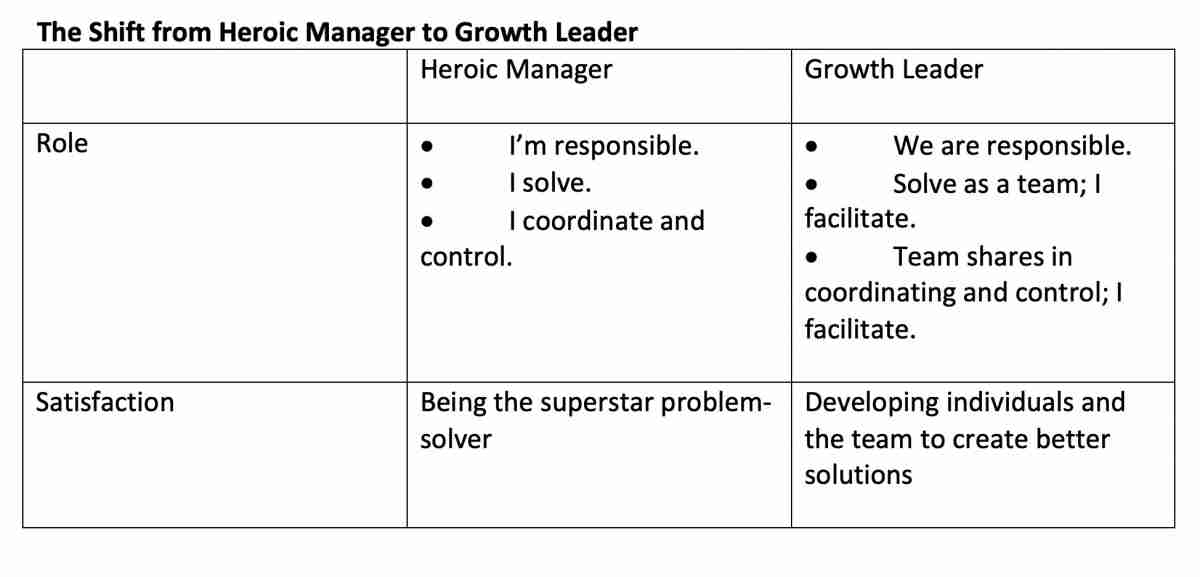Every organization struggles to transform and grow its business. Whether changing the strategy, producing innovative products and services, leveraging new technology, or integrating new systems and processes, the single most important factor in successful strategy execution is the people. The critical question is: “Do you have an engaged workforce committed to growing and transforming the business?”
Over the years, we have asked hundreds of individuals to think of a time when they were energized, engaged, and working at their best. What we heard may surprise you, but it may not if you stop and think about an experience in which you were working at your highest potential.
Five conditions consistently surface and contribute to people working “in the flow” and at their best:
- A challenging task—Give me something that is important, something to accomplish that is worthwhile and worthy of my time.
- A clear goal—I knew what I was striving for; I knew what was expected of me, and I was clear on the outcome, the vision, or the purpose.
- Autonomy—I was given the freedom to use my talents and creativity to figure things out and take ownership of the project.
- Accountability—The project had visibility; success or failure, I knew I was the one being held accountable.
- Involvement—I felt connected and energized by my peer group; we motivated each other.
We asked this follow-up question: “What was the role of your leader in that experience?” Truth be told, respondents say the leader was the one who created the conditions—they were encouraged and empowered by their leaders, but they did the work themselves.
When asked, “How does your day-to-day experience align with the kind of leadership example that energized you?” most people acknowledge it did not align very well. Why is that the case? The reality is many mid-level leaders (those accountable for transforming the business) have developed a mindset that shapes what they think they need to be and do to be successful, which, unfortunately, works against what they want to accomplish most—engaging their people to produce excellence.
What Inhibits Leaders?
Let’s explore what inhibits leaders’ ability to fully engage others. Many mid-level leaders believe that since they are accountable for results—getting the job done right—they need to take charge, assign tasks, coordinate work, control the budget, and make all the key decisions. On one hand, this sounds pretty desirable, doesn’t it? A real take-charge leader.
We refer to this approach asHeroic Management. The leader views his or her purpose as achieving specific, short-term business objectives by getting the work done throughpeople. The Heroic Manager feels he or she must have all the answers, be in control, be responsible for results and coordination, and control everything. As you can imagine, the consequences for direct reports on the receiving end of this management style are feeling disempowered, devalued, demotivated, or simply complying, at best.
Moving Past the Heroic Mindset
Mid-level leaders must move past the Heroic Manager mindset and view themselves as Growth Leaders. Mid-level leaders need to understand that while they are still accountable for results, the best way to achieve those results is through sharing the responsibility for problem-solving, decision-making, and coordinating with the team they are leading. It requires mid-level leaders to shift their mindset from “getting the work done through people” to “getting the work done with people in a way that builds their ability to do it themselves.”
Additionally, mid-level leaders need to shift the source of their own fulfillment from being the superstar problem-solver to helping employees contribute to better solutions, leading to more individual growth and success. This is represented by the table below.

Imagine Growing Individuals and Transforming the Organization
Can you envision the mindset shift that must happen to get beyond just getting work done? The organization cannot grow without growing individuals. To grow individuals, leaders need to shift beyond simply thinking about results; it is both results andthe way leaders connect individual talents with business needs that optimizes the organization’s capability to implement strategy. The shift is a difficult challenge and, beware, the barrier to growth is the Heroic Manager mindset.
The challenge for Learning and Development (L&D) professionals is to help mid-level managers shift their mindset and skill set from Heroic Manager to Growth Leader. This means helping traditional leaders learn to let go, move on, and grow as leaders who engage others to perform at their best and gain a sense of fulfillment from their work.
Tom Roth is president and chief operating officer of Wilson Learning Worldwide. With more than 40 years of experience developing and implementing human performance improvement solutions, Roth is responsible for the strategic direction and business performance of Wilson Learning Worldwide operations. In addition, he leads the Global Marketing Services and R&D Solutions Group, which is responsible for the research and development of all solutions and position papers. Roth assists global executive leadership teams with issues related to employee engagement, leadership development, strategy alignment, and business transformation. Before assuming his current role, he was president of the Global R&D and Solution Development Groups and also served as president of Wilson Learning Americas. For more information, contact Wilson Learning by visiting WilsonLearning.com or call 800.328.7937.



